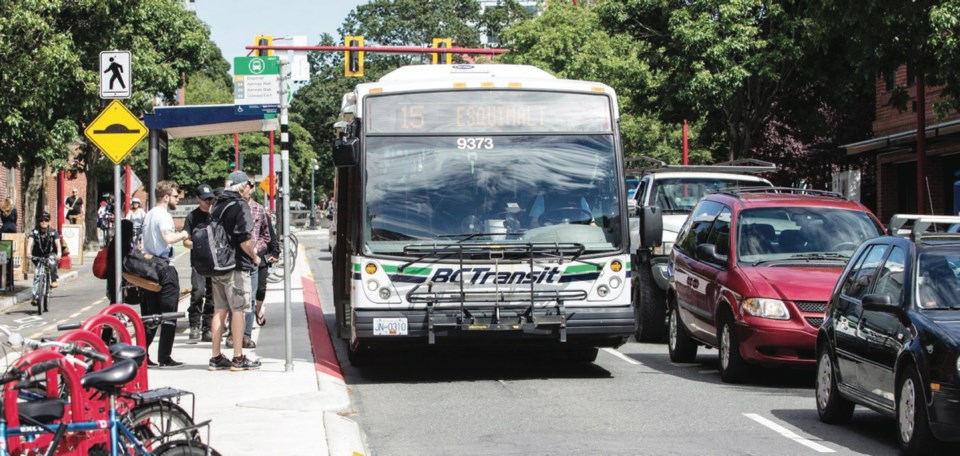When I was in my early grade-school years and had to take public transportation, my mother always told me to listen to the bus driver. It was good advice. Bus drivers have a wealth of knowledge concerning our transportation system. Because of their professionalism, I always got to school and back safely, even when mom sent my brother and me to school knowing full well it was a teachers’ professional development day. The transit driver obliged. He was probably in on the deception. To our surprise, there was no school that day. The driver told us to take the next bus home. Mom obviously needed a break.
The new bike lanes on Fort Street and Pandora Avenue in Victoria have drawn criticism from the bus drivers, and rightly so.
The general idea of separated bike lanes is a good one. It provides for a physical separation and a much safer ride for bike commuters.
There are two odd and potentially dangerous situations in negotiating the recently changed traffic flow on the two above-mentioned streets. One is a matter of space and the other is a counter-intuitive exercise in identification.
Bus drivers believe the lane width on both streets is too narrow. Their fear is for public safety; not for the passengers of the bus, but rather the vehicle passengers. Most of their bus travel will be in the right lane of Fort Street. Because the lane is narrow, they will be forced to travel very close to the left lane lines. Other traffic in the left lane beside the bus will likely lean left out of caution for such a large transit vehicle.
Passengers exiting from the parked vehicles on the left side of one-way Fort Street will be at risk. Granted, they would be deemed to have opened the door unsafely and be charged with a two-penalty-point violation and garner an $81 fine. That is hardly their most important concern. Bus drivers are very aware of the type of passenger in most motor vehicles. Many are children. Others are often not duly licensed drivers. They do not have the same caution when opening a vehicle door in city traffic. There is not a driver on the planet who has not been startled by opening their driver door when other vehicles have been threateningly close. We are often not willing to admit it, but nobody is perfect. The lack of lateral space could cause considerable legal liability for the City of Victoria.
The counter-intuitive situation for motor vehicle drivers exists on Pandora Avenue. The two-way bike lane on a one-way street is going to take some getting used to. There is a reasonable expectation that bike riders must stick to the two-way bike path provided. This is not so. They can use any travel lane at any time.
Drivers wishing to exit a business and join the natural flow of traffic, on this one-way street, will often look both ways. They are watching for pedestrians and cyclists, scooters and skateboards. Drivers are going to have to get used to looking for fast-moving cyclists, coming from an unnatural direction, on a one-way street.
Bus drivers are very aware of dangerous locations within the CRD. They are a valuable, but to date little-used, resource for traffic planners in our jurisdiction.
The permanency of the concrete dividers and the non-portable nature of the bike lane construction could be looked upon as a take-no-prisoners social-engineering project by those opposing the new bike lanes. The city might wish to use portable and temporary dividers in the future, and adjust where necessary.
Isn’t 20/20 hindsight wonderful?
Steve Wallace is the owner of Wallace Driving School on 91ԭ�� Island. He is a former vice-president of the Driving Schools Association of the Americas, a registered B.C. teacher and a University of Manitoba graduate.



